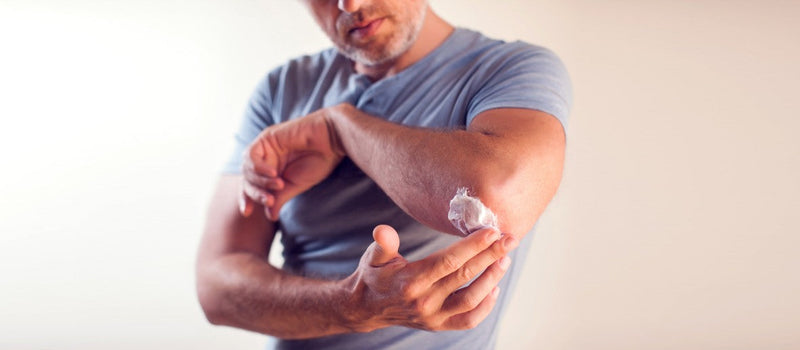

Caring for your feet is a critical part of managing diabetes. Neuropathy or nerve damage is the most common chronic complication affecting diabetes and feet, with an estimated lifetime prevalence exceeding 50 percent in people with diabetes. [1] Factors leading to nerve damage in diabetic feet include:
· Blood sugar levels that are hard to manage
· Having diabetes for a long time, especially if your blood sugar is often higher than your target levels
· Being overweight
· Being older than 40 years
· Having high blood pressure
· Having high cholesterol
Diabetic foot neuropathy also can cause numbness so that you might not feel a foot injury, cut or even a blister that could result in a diabetic foot ulcer. Poor blood flow also contributes to the potential for a diabetic foot ulcer. An ulcer that does not heal causes severe damage to tissues and bone. This can result in surgical removal (amputation) of a toe, a foot or part of a leg.
Charcot foot rare diabetic neuropathy complication
A rare complication of diabetes-related neuropathy is Charcot foot. Charcot foot disease, also called Charcot arthropathy, can result from even a small injury or infection, which you may not feel because of nerve damage. Charcot foot disease can make the joints collapse in your foot, permanently affecting your ability to use your foot. It also can make it more likely that a foot infection gets much worse or spreads to the rest of your body. [2]
While neuropathy must be present for Charcot arthropathy to develop, other risk factors include:[3]
· Excess weight on a foot that cannot sense pain makes for a perfect condition for Charcot foot to develop.
· Age is a factor. The risk of Charcot foot increases with age.
Charcot foot symptoms
· Swelling of the foot, which can occur even without an obvious injury
· Discoloration or redness
· Swelling
· A feeling of heat or warmth
More advanced symptoms of Charcot foot disease can change the shape of your feet, resulting in deformity: [4]
Rocker-bottom foot: The bones in the middle of your foot break down and collapse. This makes the arch of your foot collapse. Instead of having its natural upward curve, a rocker-bottom foot is rounded out.
Toe shape changes: Toes may curl or curve under. This happens because the bones and other tissue in your foot collapse or break. The toes compensate by gripping like a claw shape to keep you stable.
Ankle shape changes: Your ankle might bend or curve to one side and look noticeably less straight and stable than your other ankle.
Foot ulcers: If your foot or ankle changes from the condition, it can put too much pressure on areas of your foot, leading to ulcers. Ulcers increase the risk of infection.
Treatment for Charcot foot
Early-stage treatment aims to reduce swelling and stabilize the foot. Eliminating any weight or pressure is also necessary. Low-tech, non-surgical treatments include:[5]
· Protective split, walking brace or customized walking boot.
· Minimizing or eliminating all weight on the affected area by using a wheelchair, crutches, or a walking scooter.
· Orthopedic brace to correct foot misalignment.
· A customized contact case.
A doctor may also recommend surgery if the foot has become significantly unstable or cannot be braced or supported in any way.
Follow diabetes and feet care guidelines.
Manage your blood sugar: Prevent hyperglycemia and reduce your risk for neuropathy.
Check your feet daily: Look for changes. Do not forget to check in between toes.
Wash your feet every day. Use lukewarm water and mild soap to wash feet. Do not soak your feet. Dry your feet completely and apply lotion to the top and bottom but not in between toes. Applying lotion to the moist area could lead to infection.
Never go barefoot. Always wear shoes and socks or slippers, even inside, to avoid injury. Break in new shoes slowing until they are completely comfortable, wearing them an hour or two a day.
Keep the blood flowing: Exercise to stimulate blood flow in legs and feet. Also, put your feet up when you are sitting, and wiggle your toes for a few minutes several times throughout the day.
Wear proper footwear that fits well. Shoes should offer good support and protect your feet from injuries. Avoid tight or ill-fitting shoes, as they can cause pressure and blisters.
Cut your toenails straight across. Gently smooth any sharp edges with a nail file. Curved nails could become ingrown. Have your podiatrist trim your toenails if you cannot see or reach your feet.
Moisturize feet to prevent cracks: Products such as EASE-Z Diabetics’ Dry Skin Therapy Lotion and Diabetics’ Dry Skin Therapy Foot Cream uniquely feature active Zinc Acetate to relieve and protect dry, cracked skin associated with diabetes.
Also get your feet checked every time you visit with your healthcare provide or if there is a problem that will not go away. Ask if you should also see a foot care specialist, like a podiatrist, too.
Do not wait for a problem to develop that can affect the quality of your life. Manage your diabetes and health to prevent Charcot foot disease and other diabetes foot related complications.
[1] Pop-Busui R, Ang L, Boulton AJM, Feldman EL, Marcus RL, Mizokami-Stout K, Singleton JR, Ziegler D. Diagnosis and Treatment of Painful Diabetic Peripheral Neuropathy. Arlington (VA): American Diabetes Association; 2022 Feb. PMID: 35544662. https://pubmed.ncbi.nlm.nih.gov/35544662/
[2] “Charcot Foot,” Cleveland Clinic, Accessed March 9, 2025. https://my.clevelandclinic.org/health/diseases/15836-charcot-foot
[3] “Diabetic (Charcot) Foot,” Orthoinfo, Accessed March 9, 2025. https://orthoinfo.aaos.org/en/diseases--conditions/diabetic-charcot-foot
[4] “Charcot Foot,” Cleveland Clinic
[5] Whelan, Corey, “Charcot Arthropathy, Charcot Joint or Charcot Foot,” healthline, February 4, 2022. https://www.healthline.com/health/charcot-foot#treatment-options








